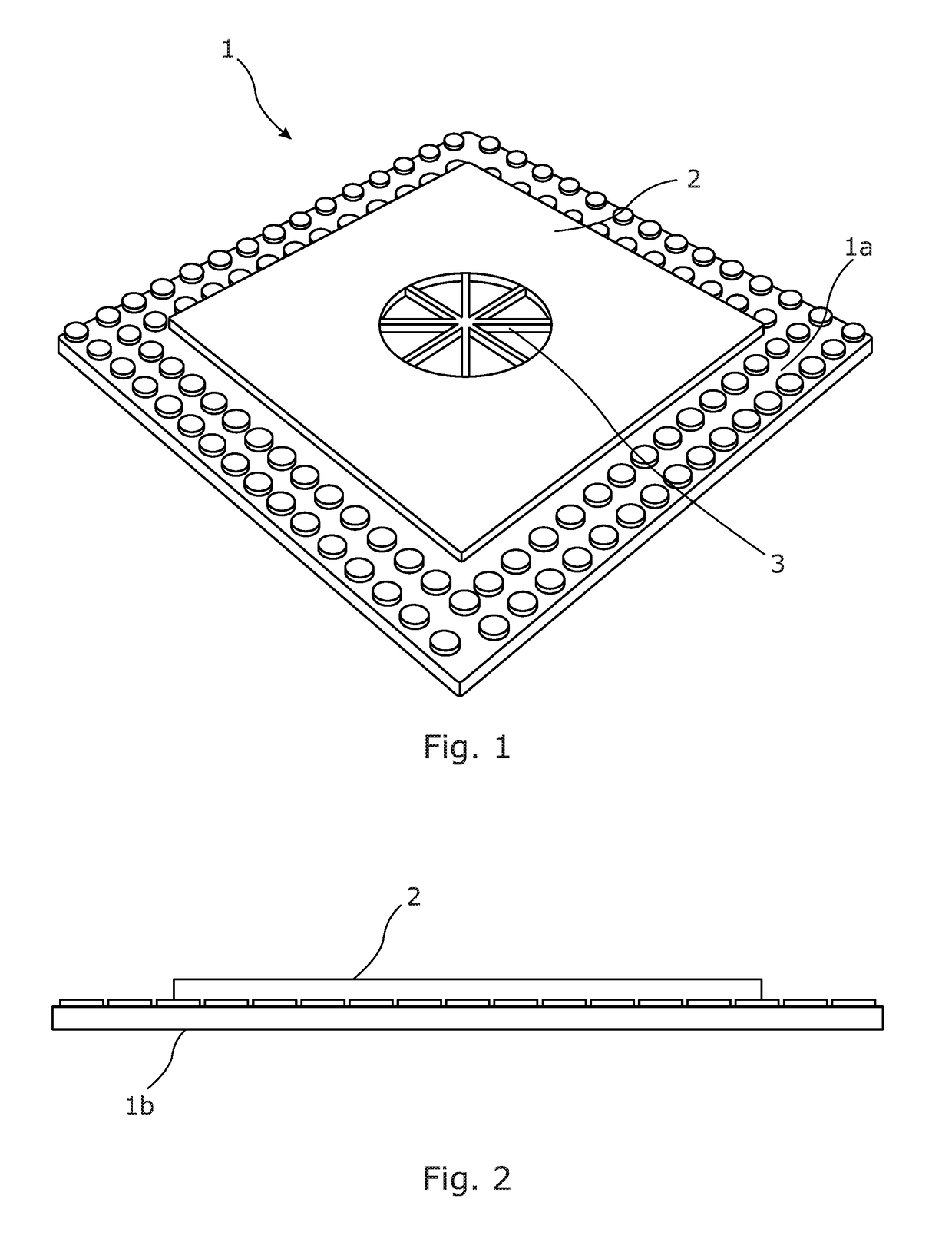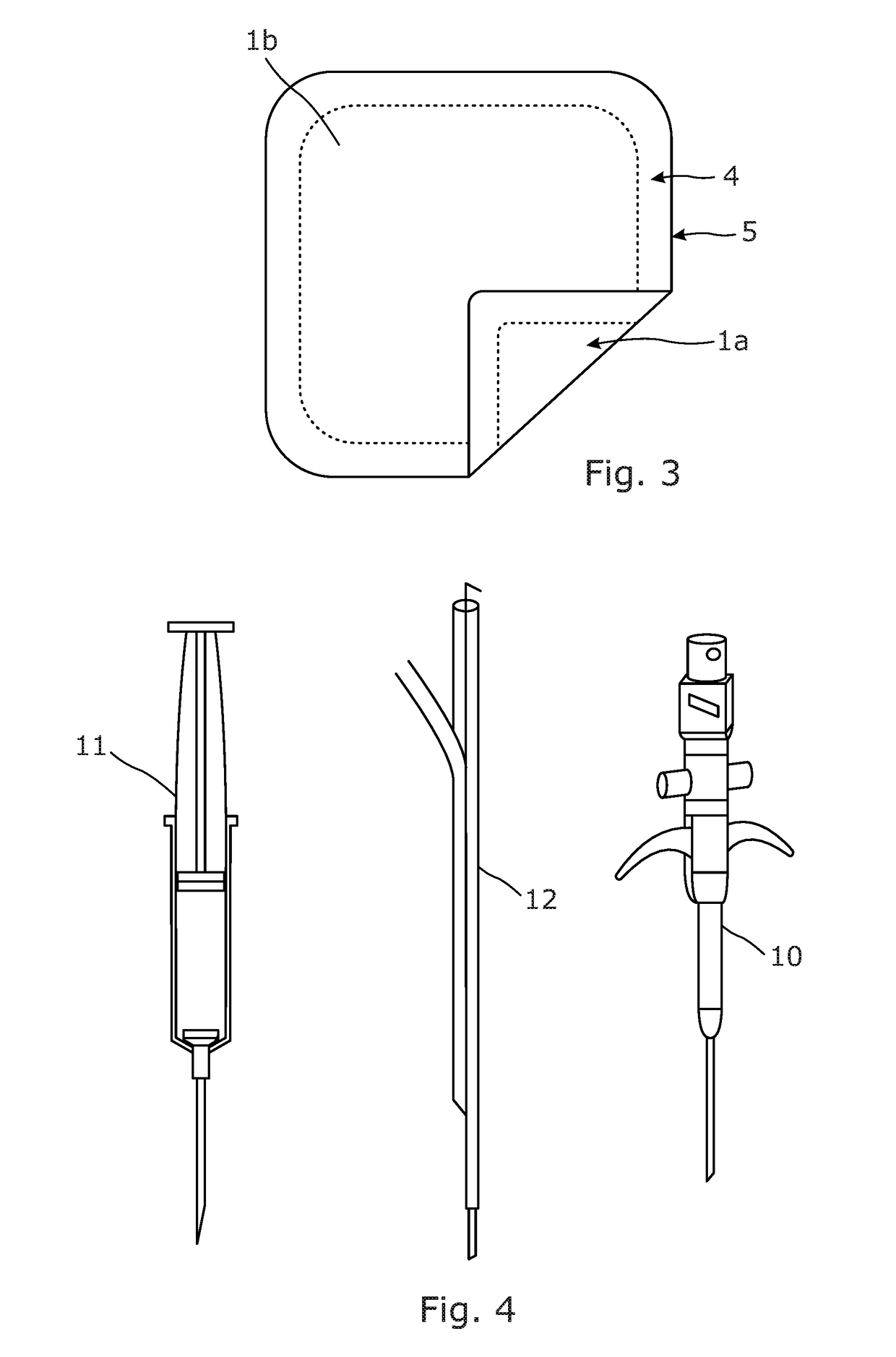Intravenous access device
a technology of intravenous access and venous access, which is applied in the direction of contraceptive devices, nitro compound active ingredients, bandages, etc., can solve the problems of large and often frustrating proportion of the workload of the staff, more difficult to insert than a simple needle, and difficult to gain venous access
- Summary
- Abstract
- Description
- Claims
- Application Information
AI Technical Summary
Benefits of technology
Problems solved by technology
Method used
Image
Examples
example 1
[0174]Example 1 illustrates an exemplary device according to the present invention.
[0175]The device is a sterile device which comprises a top layer, which provides the upper surface of the device, a bottom layer, which provides the lower surface of the device, and a heat patch in a layer between the top layer and the bottom layer.
[0176]The device is not limited to any particular shape. The device may, for example, have an elliptical or circular shape, or a quadrilateral shape, or any other shape mentioned in the present specification.
[0177]The layers are each made of a flexible material. The top and bottom layers are sealed together about their perimeters to hold the heating patch therebetween. The layers can be sealed together using any mechanism known in the art, for example they may be laminated together or secured together with adhesive.
[0178]The lower surface of the device is coated with about 0.5 g of a first composition comprising 2% by weight of glyceryl trinitrate and is fu...
example 2
[0187]A study was conducted to evaluate the advantageous effects on patient when a device based on the present invention is used before cannulation. This utilised a layer of a composition comprising 2% by weight of glyceryl trinitrate (Percutol Glyceryl Trinitrate 2% Ointment by Aspire Pharma) and a layer of a composition comprising 2% by weight of lidocaine (Anbesol Gel by Alliance Pharmaceuticals) and a heat patch which generates heat due to crystallisation and which is based on supercooled sodium acetate aqueous solution (ClickHeat by Helios). Once activated by pressure, this heats to 52-54 degrees Celsius with a lower surface temperature of 43 degrees Celsius and it remains hot for up to 10 minutes.
[0188]The study included 25 patients with ages between 19 and 52 and from different ethnic groups. Two of the patients had body mass indexes (BMI) above 30 which classify them in the obese category. Consent was obtained and a history of allergies / medical conditions was elicited. Condi...
PUM
| Property | Measurement | Unit |
|---|---|---|
| temperature | aaaaa | aaaaa |
| surface area | aaaaa | aaaaa |
| surface area | aaaaa | aaaaa |
Abstract
Description
Claims
Application Information
 Login to View More
Login to View More - R&D Engineer
- R&D Manager
- IP Professional
- Industry Leading Data Capabilities
- Powerful AI technology
- Patent DNA Extraction
Browse by: Latest US Patents, China's latest patents, Technical Efficacy Thesaurus, Application Domain, Technology Topic, Popular Technical Reports.
© 2024 PatSnap. All rights reserved.Legal|Privacy policy|Modern Slavery Act Transparency Statement|Sitemap|About US| Contact US: help@patsnap.com










